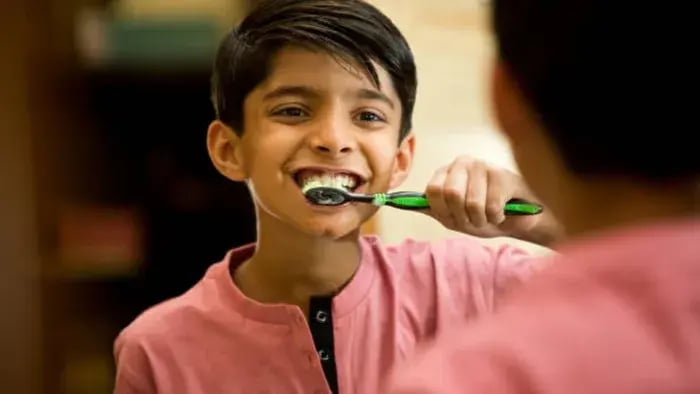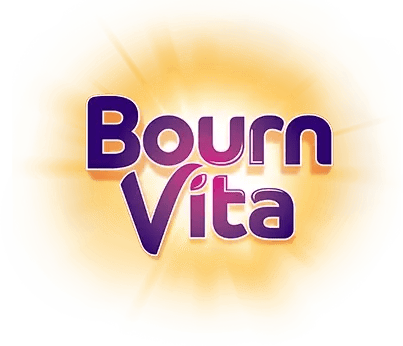- Morning Hygiene Routine
- Tidying Up After Themselves
- Completing Homework or Study Time
- Helping With Simple Household Tasks
- Using Polite Words and Showing Kindness
- Packing and Organizing School Bags
- Screen-Free Wind Down Time Before Bed
Introduction
Habits shape children, how they think, solve problems, and manage their time. From brushing their teeth without being reminded to saying thank you on their own, small daily actions slowly grow into powerful life skills. The earlier you introduce these habits, the more naturally they become a part of your child’s personality.

According to a study published in Bioinformation 2022, good habits are important because they help children feel capable and grounded. When kids know what to expect and what’s expected of them, they feel more secure and confident. Even if it is tidying up their toys, following a bedtime routine, or being polite to others, these small patterns create a sense of rhythm and responsibility that benefits them throughout life.
One of the easiest ways to support this journey is with a habits chart. According to UNICEF, it provides structure, clarity, and lets children visually track their progress. It becomes a gentle guide, showing how responsibility, kindness, hygiene, and time management can be part of everyday life. It also encourages independence. When children tick off tasks themselves, it gives them a quiet sense of achievement. And when the chart includes fun, age-appropriate goals, it turns routines into something they enjoy, not something they’re told to do.
A well-made habits chart is about consistency, encouragement, and learning by doing. With the right approach and a little patience, you’re helping your child build a strong foundation, not just for now, but for the future.
7 Good Habits for Kids Chart: Building Routines for Life Skills

Using a habit chart is a practical way to guide this journey. It turns everyday tasks into visual goals. With checkboxes or colorful icons, kids can see what needs to be done and feel proud when they complete it. The key is to keep the chart simple, age-appropriate, and consistent. Focus on habits that build self-care, responsibility, and kindness. Let your child be part of the process; maybe they get to choose stickers or help design their chart. When they feel involved, they’re more likely to follow it with excitement.
Here are 7 good habits worth adding to your child’s routine chart. Each one supports a life skill that matters beyond childhood.
Morning Hygiene Routine
Waking up and getting ready sets the tone for the day. A morning routine that includes brushing teeth, washing the face, and combing hair teaches your child about self-care. When these steps are followed regularly, they become automatic. You can break it down into smaller steps on the chart so it feels more achievable, like “brush teeth,” “wash face,” and “put on clean clothes.” With practice, your child will begin doing these tasks without reminders.
Tidying Up After Themselves
Even if it is putting toys back after playtime or folding their blanket in the morning, tidying up is a habit that builds responsibility. Kids need to know that every item has a place, and they play a role in keeping the home clean. Adding “clean up toys” or “put shoes away” to the chart helps your child connect actions with results. Over time, it teaches care, order, and self-discipline.
Completing Homework or Study Time
Cleaning the space after working is about learning to manage time and focus. Even 15–20 minutes of study time each day builds a strong habit, especially if it's done at the same time consistently. Include this on the chart as “homework time” or “read a book.” It gives your child a clear space in the day that’s meant for learning. Keeping it short and predictable avoids last-minute pressure and builds a steady learning rhythm.
Helping With Simple Household Tasks
Children feel proud when they get to help. Tasks like setting the table, watering plants, or feeding a pet teach them that their actions matter. These jobs make your child feel included. Adding “help with dinner” or “feed the dog” to the chart builds teamwork and empathy. It also shows them that chores aren’t punishments, they’re part of sharing life at home.
Using Polite Words and Showing Kindness
Saying “please,” “thank you,” or “sorry” doesn’t just sound nice, it builds emotional intelligence. Kids learn early that kind words make relationships smoother. You can add this to the chart as “use polite words” or “share a smile.” You don’t need to track every word, but gentle reminders and praise when your child uses manners help turn it into a habit.
Packing and Organizing School Bags
Let your child take part in packing their school bag, lunchbox, or water bottle each evening. It builds planning and awareness of what’s needed the next day. The habit teaches responsibility without being overwhelming. Add a task like “pack school bag” or “fill water bottle” to their evening chart. You’ll slowly notice fewer forgotten items and a growing sense of independence.
Screen-Free Wind Down Time Before Bed
Sleep habits shape everything, from mood to learning. Create a calming bedtime routine that avoids screens for at least 30 minutes before sleeping. Use this time for storytelling, soft music, or quiet play. Add “bedtime routine” to the chart with specific steps like “change into pajamas,” “story time,” and “lights out.” With consistency, your child’s body and mind begin to expect rest at that hour.
Conclusion

Good habits, when practiced every day with gentle support, start to stick. A habits chart is a simple but powerful tool that helps your child connect actions with values like responsibility, self-care, and kindness. Celebrate small wins, adjust the chart as your child grows, and keep the mood positive. When routines are made part of daily life early on, they become natural tools your child can carry confidently into their future.
Her love for storytelling began with reading her grandfather’s speeches, where Tarishi saw the power of words in creating lasting memories. Combining her passions for food and writing, she has turned her life into a fulfilling path of sharing stories that celebrate flavours and how food brings communities together.
The views expressed are that of the expert alone.
The information provided in this content is for informational purposes only and should not be considered a substitute for professional medical advice, diagnosis, or treatment. Always seek the advice of your physician or another qualified healthcare provider before making any significant changes to your diet, exercise, or medication routines. This is a sponsored article.
References
















